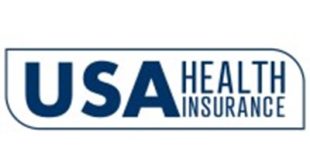Understanding the Cost of Business Insurance for Sole Proprietors
Business insurance is a crucial consideration for sole proprietors, as it provides financial protection against a range of risks, from property damage to liability claims. The cost of business insurance for sole proprietors can vary widely based on several factors. This article explores the different types of business insurance available, the factors that influence their cost, and tips for obtaining affordable coverage.
Types of Business Insurance for Sole Proprietors
- General Liability Insurance: This type of insurance covers third-party claims of bodily injury, property damage, and advertising injury. It is often the first type of coverage a sole proprietor considers.
- Professional Liability Insurance: Also known as errors and omissions insurance, this policy covers claims related to professional mistakes or negligence.
- Business Owner’s Policy (BOP): A BOP combines general liability insurance with property insurance, which covers damage to business-owned property, in a single package. It is typically more cost-effective than buying these coverages separately.
- Workers’ Compensation Insurance: If a sole proprietor has employees, this insurance is usually required by law and covers medical expenses and lost wages for work-related injuries or illnesses.
- Commercial Auto Insurance: If business operations involve the use of vehicles, this insurance covers liability and damage related to business vehicles.
- Cyber Liability Insurance: This coverage is increasingly important for sole proprietors who handle sensitive information online, as it protects against data breaches and cyberattacks.

Factors Influencing the Cost of Business Insurance
- Type of Business: The nature of the business significantly affects insurance costs. For instance, a construction business may face higher premiums than a consultancy due to the higher risk of accidents.
- Location: Insurance costs can vary based on where the business is located. Areas prone to natural disasters or with high crime rates may see higher premiums.
- Coverage Limits: Higher coverage limits provide more protection but also increase the cost of insurance. Sole proprietors need to balance the need for adequate coverage with their budget.
- Deductibles: Policies with higher deductibles usually have lower premiums. Sole proprietors should choose a deductible amount they can afford to pay out-of-pocket in the event of a claim.
- Claims History: A history of frequent claims can lead to higher premiums. Insurance providers consider businesses with fewer claims to be lower risk.
- Revenue and Size: Higher revenue businesses or those with more assets may face higher insurance costs as they have more to lose in the event of a claim.
- Industry Risk: Some industries are inherently riskier than others. For example, a sole proprietor working in healthcare or legal services may pay more for professional liability insurance due to the higher risk of litigation.
Average Cost of Business Insurance for Sole Proprietors
The cost of business insurance can vary, but here are some average figures to provide a general idea:
- General Liability Insurance: Typically ranges from $300 to $1,000 per year, depending on the business type and risk factors.
- Professional Liability Insurance: Costs can range from $500 to $3,000 per year, based on the profession and coverage limits.
- Business Owner’s Policy (BOP): Usually ranges from $500 to $2,000 per year, offering a bundled saving over separate policies.
- Workers’ Compensation Insurance: Costs vary widely by state and industry, but can range from $0.75 to $2.74 per $100 of payroll.
- Commercial Auto Insurance: Typically costs between $1,200 and $2,500 per vehicle, per year.
- Cyber Liability Insurance: Costs generally range from $500 to $1,500 per year, depending on the level of coverage and business risk.
Tips for Reducing Business Insurance Costs
- Shop Around: Compare quotes from multiple insurance providers to find the best rates and coverage options.
- Bundle Policies: Consider purchasing a Business Owner’s Policy (BOP) to combine general liability and property insurance at a lower rate.
- Increase Deductibles: Opt for higher deductibles to reduce premium costs, but ensure you can afford the deductible in case of a claim.
- Improve Risk Management: Implement safety protocols and risk management strategies to minimize claims and demonstrate lower risk to insurers.
- Review Coverage Annually: Regularly review your insurance policies to ensure they match your current business needs and adjust coverage as necessary.
- Seek Professional Advice: Consult with an insurance broker who specializes in business insurance to get personalized advice and find the most cost-effective coverage.

Conclusion
The cost of business insurance for sole proprietors can vary widely based on multiple factors, including the type of business, location, coverage limits, and claims history. By understanding the different types of insurance available and the factors that influence their cost, sole proprietors can make informed decisions to protect their businesses effectively. Taking steps to shop around, bundle policies, and improve risk management can help reduce insurance costs while ensuring adequate coverage. Investing in the right business insurance is essential for safeguarding your business against potential risks and ensuring long-term success.


